Fifteen years ago GB Railfreight started operating trains. The first train was launched at Willesden depot on March 27 2001, when 66701 was named Railtrack Logistics Centre to mark the partnership between Railtrack and GBRf.
While Railtrack has long since vanished, GBRf has gone from strength to strength. It is now the third largest UK freight company, has a turnover of more than £100 million, and employs almost 700 staff.
From its humble beginnings in 1999 (when the company was set up) to the juggernaut it is today, the GBRf ethos has always been about its staff and innovative ways of working. It caught the imagination with its ‘can do’ attitude - an attitude that encouraged its staff to go above and beyond their duty to get the job done and ensure customer satisfaction.
Starting off as a provider of infrastructure trains for Railtrack, GBRf grew quickly. It entered the intermodal market… and petrochemicals and coal followed. Biomass, rail services and aggregates now also all feature in its portfolio.
The company also provides traction and crews for the Caledonian Sleeper franchise, while GBRf drivers are currently the only ones in the UK who are passed to drive Hitachi Rail Europe’s Intercity Express Programme (IEP) trains on the main line. It has also recently started developing its passenger operations, having acquired a passenger licence some years ago.
GBRf is owned by Eurotunnel, having been bought from FirstGroup. This deal has enabled the company to expand considerably, including the single largest acquisition of locomotives by one company since EWS bought 250 Class 66s in 1996.
It was this determination and ambition that attracted Head of Strategic Development Duncan Clark. Having previously worked for DB Schenker, Clark then moved to Network Rail before arriving at GBRf in November last year. It was a career move that he had been eyeing up for a while.
“I made a decision in 2007-2008 this was the business to work for. I worked for another operator, and what I wanted to do I couldn’t do in the business I was in. And trying to turn that around is a difficult task.”
Settled into his role, Clark’s job is to ensure that GBRf can continue to grow. The traditional rail freight core market of coal is dropping. GBRf made a splash here in 2007 when it entered the market, reaching 10% of the market within 12 months. But what happens now? Coal is declining, and all coal-fired power stations will close by 2025.
“The growth markets we’ve picked up are intermodal, for example,” says Clark. “We are one of two international operators. There’s only us and DB Cargo. We have run trains through the Channel Tunnel as part of Europorte. We have ambitions to run European trains of our own, but European transportation is very much like a domestic intermodal train.
“Where I distinguish between the two is deep sea intermodal comes from a port, which is part of a journey on to a regional distribution centre, whereas domestic intermodal is from regional distribution centre to regional distribution centre. Daventry to Grangemouth is a classic example. You’re essentially doing the trunking business that would have happened with double-deck trucks.”
Is this the market, going forward?
“The biggest port in the country is Felixstowe, so that was the right place to go. Felixstowe is now already at 31 trains , soon to be 32.”
Clark believes that Freightliner will actually win that path, but GBRf has a business case in place for another path from the Suffolk port for later in the year. If successful, GBRf would operate eight trains each way per day into the port. However, that success also brings a challenge.
“You are moving 33 trains from a single branch line, and you’re still having to run a regular passenger service, which means there are difficulties in the times of delay and perturbation,” explains Clark.
Weather is an important factor. Clark points out that between 3% and 6% of trains are cancelled either because of wind, or due to other factors that limit use of the branch.
“And that makes it very difficult to put a solid business case together, because ultimately you have to build in the day that you can’t run the train.”
There have been regular calls for routes across which GBRf’s intermodal trains operate to be electrified. Infrastructure upgrades are reckoned to be vital for rail freight, and yet what look like fairly routine projects can often be put to one side by Network Rail on cost grounds. Doubling the Felixstowe branch cannot be achieved because of a viaduct, so there is talk of dynamic loops. Sir Peter Hendy’s review for NR (published in November last year) suggests that this will happen in Control Period 6 (April 1 2019-March 31 2024), but no firm date has been agreed. Surely this needs addressing?
“Intermodal is not just a great wire-up,” explains Clark. “The relatives of intermodal can work. The branch at Felixstowe is almost full - we’ve been saying that since the 24th, 25th train when I worked two companies ago at a different place. They always said it was full then.
“The reality is there’s probably more we can squeeze out of it, but very little over margins. And Network Rail’s build plans and the Hendy Review has pushed a whole bunch of stuff that would have factored that particular branch line back through to 2019-2020. So we’re saying the biggest port in the country is closed for business.”
Clark suggests that work could start in 2019/2020 at the earliest, with work required at Westerfield Junction and Trimley.
“Fundamentally the difference between freight and passenger can be seen in enhancement programmes, because enhancement programmes generally for passengers are kept captive to a route,” he says.
“The minute the enhancement programme is done passenger trains can take advantage of that immediately. When you think of the enhancement work that has been going on from Felixstowe through to Nuneaton, it’s been done in a piecemeal fashion. The rationale for that was available money, and trying to piggyback on schemes that the passenger operators or Network Rail were funding for the purpose of passenger growth - for example, for Department for Transport commitments and timetabling.”
Surely, because of the amount of money in rail freight and its value to the UK economy, in the grand scheme of things a £200 million rail freight scheme shouldn’t be an issue? Clark doesn’t think it should be, but says that’s not enough.
“Network Rail has never been ambitious enough, and I think that’s because it hasn’t had a mandate necessarily.”
Is that because NR is not ambitious enough as a company in general, or just aimed at freight?
“Freight,” Clark responds. “Freight’s really cleaned up its act over the last three to five years, where performance wasn’t a thing that was necessarily held in high regard. We have now in GBRf some of the best-performing trains in the industry we’ve ever had. In terms of the trains we run on a regular basis we’re up in the 91%-92% arrival within 15 minutes - which is 100% better than a passenger train… than a road vehicle.”
Is there still a railway culture where if there’s a problem, freight is immediately put in the loop?
Says Clark: “The reality is that freight’s always been at the bottom of the pile. That’s just how it is. Network Rail doesn’t say that out loud, but from a regulation perspective…”
However, rather than complain, Clark has solutions.
“We have to be able to give the signallers better information. At the beginning of this Control Period we changed the measure away from delay per hundred km, which is very difficult to work out, to a measure called FDM - freight delivery metric. This essentially said that delivery has to get the train wherever it’s going within 15 minutes of planned time.”
This works in exactly the same fashion as Public Performance Measure (PPM) for passenger operators.
Clark adds: “But it also has a perverse piece where, if the train’s already 20 minutes late and the railway’s just gone really awry, then the freight train’s never going to get where it was supposed to, so you’ve failed. It can’t get any worse than a failure. In those circumstances we just use normal control pressures to push folks along. What we’re trying to do is to make sure the train never gets to more than two hours - potentially four hours worst case - late.”
He says that if the train is that late, then the service just cannot be recovered: “For freight it’s never really about the delay on the day. If the overheads are down or the railway’s closed, it’s really about trying to recover it in that four-hour window.”
Clark explains the thinking behind this: “Ultimately it’s the second order reactionary delay where the train’s arrived at its destination, but because it was so late it can’t be off-loaded, reloaded and sent back out.”
That scenario seriously affects GBRf. The freight company has a different model to others, in that it ‘sweats’ its assets. Clark explains: “We don’t go in and drop a wagon set, and then pick up a new wagon set before it’s pre-loaded. We sweat the asset. That’s the way our economics work.”
Clark recalls his first day with GBRf as an example of how the company operates in a different way.
“The first thing John Smith did when I came to this very office was give me a handbook. And in that handbook was basically a photograph, name and job title, and location of every employee in the business.
“The second thing he said to me was: ‘Make sure you get your PTS and cab pass arranged as soon as. I expect you on a regular basis to be on cab rides and meeting the workforce.’
“And we have. We have regular socials and interactions. The reality is our workforce is the key reason why we can get a degree of efficiency over and above our competitors.”
This partly comes down to job titles (train managers rather than drivers, assistant train managers rather than guards or ground staff), and the fact that they wear uniforms and ties.
Says Clark: “So these guys are given more authority and responsibility. We pay them and remunerate them well. But also we look after them in other ways. That’s the biggest part - pay is only one element.”
He elaborates: “The reality is having the right relationship with your workforce helps navigate those things. And we have had difficult arrangements to make. Last year we had a very big issue with the end of the SSI contact up at Lackenby. I wasn’t here at the time, but I looked on. I was still at Network Rail - I knew I was coming up to GB Railfreight.
“I got a call from John Smith directly and another call from Dave Knowles who said: ‘Can you speak to the guys in Network Rail and see if there are any opportunities to redeploy some of these guys? They’re fully trained up. If we need to put some investment in to get these guys, so they can be redeployed, we’re willing to take that on as well.’
“Again, I wasn’t an employee at that time, but those conversations don’t generally go on. It was literally a plea for help - look through the Rolodex and look at somebody who might be able to help those guys out.”
Everyone who could be helped was. Some are now driving for GBRf, some have relocated across the country, and some now work for companies such as Crossrail.
“That’s exactly how it should be,” says Clark, clearly proud of the effort. “We all win together and fail together. If we’re together, the failures are never as hard as they otherwise would be, and successes are that much sweeter.”
That’s all very well, but how does GBRf intend to grow in what is a very tough market?
“GBRf has to grow as it always has done, in organic fashion. And like with the shocks that have gone on in the coal market, we have to be much more predatory in terms of attacking the opportunities.”
Is that new opportunities, or cherry picking existing opportunities that are coming up?
“If our model fits the opportunity best, then we will swing for it. But we don’t swing for every opportunity that comes round. GBRf has grown by concentrating on the corridors it can do best.
“But as we’ve grown bigger our network has got wider, and our ability to bid for businesses more competitively has absolutely come towards us. For me, my focus this year and into the next three years is about intermodal, domestic intermodal, international opportunities, and aggregates.”
Does Clark mean specifically through the Channel Tunnel, or actually operating through mainland Europe?
“We already do operate in mainland Europe - that’s Europorte. We already work together with German traffic, for example. Right now we’re bringing in traditional wagons for the long-welded rail train. So the HOBC services, we’re bringing in wagons that are coming in from Germany right now, through Saarbrucken over into Calais Frethun and then we haul them through the Tunnel. Some of them go onto Carlisle, for example.
“We’re already doing that work on a regular basis. We do lots of unit work as well, rail service aside. International has always been in GBRf’s roster, but we’re taking the next step. We have aspirations to run our own services, and we have to navigate some of the problems on HS1, where HS1 has a different track access contract to Network Rail.”
GBRf is one of two operators (DB Cargo UK is the other) that operate freight on HS1, but the numbers have not been anything like predicted.
Clark acknowledges the challenges: “There are a bunch of other liabilities that HS1 brings that we don’t have on classic infrastructure. It’s one of those things with HS1 whereby we’re allowed freight trains on there, but only in a very narrow window and with full liability. I suppose HS2 has been very clear about not bringing any freight trains here.”
Yes, HS2 - the big opportunity for the railway, the chance to release capacity (like a valve) from the London to Birmingham section of the West Coast Main Line from 2026. South of Rugby, the WCML is the most congested section of railway in Europe. The new railway should, in theory, offer opportunities for growth and extra capacity.
“What I worry about with HS2 is whether it just becomes a market segment,” says Clark. “Currently you have regional services on the West Coast. You also have the high-speed services - the Virgin Pendolinos at very high frequency.”
But if you assume that that’s what will end up on HS2, and that what is now London Midland essentially becomes the main operator on the WCML, that could lead to all kinds of possibilities?
“It could, but that’s if you have volume that transfers. If you look at other countries around Europe where they have very high-speed railways (and we already have a very high-speed railway in comparison to certain countries and certain railway operators around the world, with our 125mph services), if we then have a very high-speed service that’s going to run on HS2, is that a bespoke
service in itself, and do we really turn the Pendolinos and Voyagers off? Or does that give a premium opportunity to move around quickly on HS2?”
Clark raises some interesting questions. Does he think there’s been sufficient debate on this issue, especially as HS2 is essentially only a decade away?
“We’re still in the throes of that. Network Rail and HS2 have started the consultation on what we do with capacities. They’ve made assumptions that capacity will free up. What we don’t have, because of the nature of the track access contract and how the network code works, is the ability to pre-allocate that capacity in a strategic capacity sense for freight operators.
“My role puts me in a position whereby I get involved in all of the Network Rail consultations. That puts us in the middle of the right conversations. The DfT is building its strategic rail freight plan right now. We’re involved in six workstreams. We sit on the board and the panel as well. There are opportunities, but there are also concerns.”
Looking at other markets, the amount of aggregates carried may have dropped in recent Office of Rail and Road freight statistics, but is building London still a massive market potential for rail freight?
“Huge. If you want to look at the opportunities for rail freight, it changes around in aggregates because it’s around where the roads are being built.
“Sometimes it’s just economical to road haul to destinations. If you were doing an M4, for example, the Mendips are just road haulage. But if you’re moving the volume out of the quarries towards where the roads are going to be built and they are some distance away, ideally over the 100-mile threshold, then they’re obviously within target range.”
The large-scale road plans announced by the Government are actually likely to benefit rail, he says.
“If you look at the Highways Building Plan, the £10 billion to £13bn they’re going to spend over the next five to ten years, that gives you some indication of the amount of aggregate business opportunity.”
There are 160,000 homes planned for London. Add the construction of HS2 and the need to move 130 million tonnes of material, as well as Crossrail 2, and surely the business is looking rosy?
“We’re involved with the Transport for London people on London Euston, for example. So if Crossrail 2 goes ahead there’ll be a junction just under Euston. So not only will there be a high-speed railway, it will also need modernising for that. We’re going to have a huge underground complex built for Crossrail.”
With this brings yet more potential opportunity, Clark explains. “You’re in a position whereby one of the plans was to shut Euston Road for a significant period of time. There are opportunities there for rail freight that we’re exploring. We have to wrestle with how do we build London and keep the railway open, and keep people moving at the same time? It’s an unenviable task.”
Some issues that affect rail freight are more wide-ranging. For example, the migrant crisis that has consumed Calais in recent months has had a direct effect on rail freight through the Channel Tunnel. Trains could not run due to security concerns. The plan has been to keep trains running, but that has not always been possible. All being well, a new service will start this month, but concerns remain.
Clark explains: “The reality is the customers are reluctant. The customers are reticent about signing up to long-term deals when we see the media coverage about what’s going on over in Calais.
“There are fears about the number of people who are moving through Europe towards the borders. That gives folks concern that they wouldn’t have had before. It’s probably a second order issue as a result of the problems we had in summer last year.”
There was a similar problem in 2000-2003 with EWS - the international market was crippled as refugees sought entry into the UK by clinging to trains. Is there concern that this could be repeated?
“It all depends on whether or not the work that’s been done by the French is maintained. The French have put up 30km of fences now, in many cases four metres high with razor wire at the top, and three metres in other areas because of overhead catenary lines.
“On a regular basis there are upwards of 20 police on duty, with dogs as well. They’re also involved in other activities like visible policing, where they’ll move vehicles around with the lights on. And I’m sure if you were to look at the thermal imaging cameras from the helicopters, you would see in a tragic way migrants being herded around and away from the railway. The work the French are doing - it’s mind-blowing how well they’ve taken to dealing with this issue.”
And yet, putting that to one side, the Tunnel has remained a missed opportunity in terms of what traffic could go through there. Is that something that Clark is actively looking to try and change?
“Yes. There are flows of traffic that make sense for the Tunnel because it is an expensive undertaking to use HS1, which has a different charging mechanism that is much greater than that of Network Rail.
“Then you’ve got the Channel Tunnel costs and tolls and security issues. So it becomes an expensive part of the journey. To make that make sense, it means the distance you have to operate over so you can advertise that premium cost of overhaul mileage, the further away you can get from the Western ports the better. Italy is a good target, which has happened before. Poland’s a good target - even on to Turkey and other places like this.
“There is lots of volume regularly flowing from these countries to the UK. What we have to do is capture those and deal with the fact you’re changing jurisdictions, which means engine changes and sub-contractor arrangements with international rail operators.”
Clark says it always comes back to risk and reward arrangement, where the reward is whether for customers using rail versus road would make a better margin. Then there are also the social and economic benefits to consider, as well as the risk that the train doesn’t make the transit.
“One truck not making it through is easier to handle than 32 trucks not making it through,” says Clark.
What would be the biggest risks getting it across Europe? Would it be negotiating orders?
“Borders have rarely been a problem in my experience,” he says. “The problem has been navigating the relevant infrastructure managers.
“So we have problems depending on their engineering programmes. If you think about in the UK, if we were to dig up a piece of the railway - for example, the West Coast Main Line - we would have alternative routes available for diversions. Other infrastructure managers aren’t necessarily organised in quite as efficient a way. They don’t really understand what we call the joint network availability plans.”
Clark says that by all infrastructure managers buying into using the planning systems and making sure that the systems are up to date, this should become less of an issue.
“But it’s about making sure that there is always a route open,” he adds. “And the alternative routes sometimes put more time into the plan. So you only need to have 20 minutes, an hour, two hours’ additional into transit and then you might not make your connections.
“Because we will run trains even though they’re running late, and try to get them back to time. In Europe if you’re more than a couple of hours’ late they stop you and hold you to your next available path. And that next available path might be 24 hours away.”
What are the benefits to moving across Europe by rail, as opposed to on the back of a lorry?
Clark argues that there are multiple benefits: “A lot of them are economic in terms of its socio-economic benefits of having trucks and the impact they have on society. There’s the carbon and environmental benefits. But also, if you go across Europe of a weekend, there are limitations on when a truck can run.
“Time is a benefit that rail freight can bring. That time translates into inventory benefits. The quicker we can transit, the less stock they have to hold at either end of the pipe, essentially.
“Inventory benefits are always a target. But if you’re going to start removing warehouse stock in favour of running a train, the train better make it on time. It better make it to the right place.”
- This feature was published in RAIL 798, published April 13 2016.


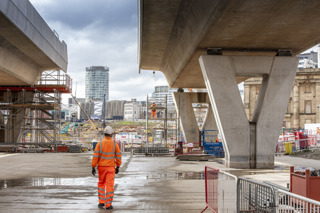
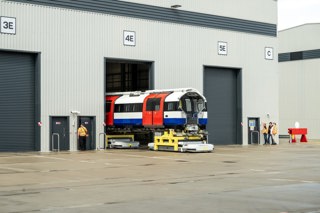
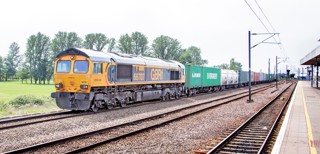
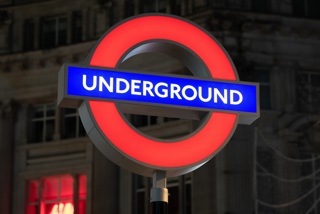



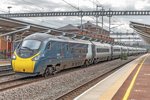








Login to comment
Comments
No comments have been made yet.